Satmetrix is a SaaS (software-as-a-service) based software solution that helps clients managing and improving overall customer experience, by collecting continuous and actionable customer insight. They are the co-creator of the Net Promoter ® methodology and, every year for the past nine years, they hold a dedicated conference in London. During the International Net Promoter Conference, Customer Experience executives and professionals gather to share best practices with leading experts and to network with peers to build and scale world-class Customer Experience programs.
This year I was there too and below you find my highlights from the two days Conference and the NPS2 Upgrade Certification.
A recap
The conference took place at Stamford Bridge, the basis, for football fanatics, of the CFC – Chelsea Football Club. Despite being Italian, I’m not quite a football fanatic and, in fact, I only seem to be going to the big stadia for business events. I enjoyed having the chance to be in beautiful London city, where I hadn’t been since my time at Forrester Research.
The conference is preceded by few days of training for who is interested in taking the NPS certification. Being already a Net Promoter Certified Associate, I joined only the last day of training during which the new NPS2 methodology was introduced.
Based on ten years of experience and Best Practices for Net Promoter Success, Satmetrix partnered with industry thought leaders to build a new methodology framework covering five areas:
- Measurement Framework: Persona and Journey Mapping, Survey Structure, Sample Strategy
- Actionable Insight: Reporting Strategy, Results Analysis, and Net Promoter Economics
- Smart Loops: Process Design, Organizational Readiness and Action Planning
- Organization Adoption: Communication Plan, Champion Networks
- Foundation: Stakeholder Alignment, and Governance Model
While it’s always good and inspirational to get additional insights and methodologies, it was for me extra valuable to get validation of the fact that the “NPS Household & Journey methodology,” that I’m using with my clients, was already including the new findings & best practices. And it was valuable the extra peer to peer exchange that took place during the training, both a confirmation (and sort of reassurance) that most companies – especially big international ones – are having the same challenges and an opportunity to exchange ideas on what works best to address these challenges.
The conference itself lasted two days. It was open by Satmetrix President and CEO Richard Owen, reinforcing why Net Promoter is so essentialin today economy and introducing why NPS2 as a new methodology.
Three main takeaways for me from his opening speech:
- “90% of advertisement money just go lost without generating any value“: historically companies have spent much money on advertisement. When done right, ads may create awareness, in best cases they can even be highly entertaining and go viral, but ultimately they don’t create value for the end customer. Vice-versa, focusing that investment on customer experience, and even more so on overall lifetime opportunity rather than on a one-off transaction, will not only generate lasting value to customers and society, but it will generate word of mouth advertisement, which we know is the most effective and trusted one.
- historically, each company success was mainly driven by focusing on one out of 3 strategies: low cost (operational leadership), constant innovation (product leadership) or customised offering (customer intimacy). Now companies “have to be the best at what they do at least in some key customer segments.” But “the best” is difficult to define. “Disruptive companies are thinking about what customers want, not what they expect.” And I would add that actually “successful disruptive companies are thinking in terms of customer needs, even more so than of customer wants”
-
- An analysis from A.T. Kerney shows that the level of information complexity has become simply too high for the human brain to be able to cope, especially when having to make real-time decisions. Hence, to be successful in this new era, we need better tools. Satmetrix’s answer to this need is:
- new method: NPS2
- new system: NPX
The conference continued with eight keynote speakers – including thought leaders, like The Temkin Group’s Aimee Lucas, author Stephan Osthaus, Jill Dean of Brand Biology, Bob Thompson from Customer Think, and deep-dive case studies from CX leaders like Airbnb and Virgin Media. Also five different break-out sessions, each with a choice of three options, and plenty of break-time to network with peers and exchange insights. All in all plenty of valuable content and sharing.
Across all sessions and peers exchange I had, the following eight recurring themes kept coming up and seemed to be valid for most of speakers and attendees.
Eight recurring themes that kept coming up
- Focus has shifted from data (and score) to continuous insight and action. It’s not one metric or the other to drive the real differences between leaders and laggards companies, but their capability to gain insight from unstructured feedback and drive meaningful & innovative action! We need continuous insight to address the increasingly faster pace of transactions.
- Closed-loop actions have become key for most companies, yet they are all struggling with scaling that up, especially with one-on-one replies to customers providing feedback. More focus is required to transform Passives into Promoters
- Employee experience and engagement is the flip side of Customer experience and engagement: they are two sides of the same coin and what you do with one has a direct impact on the other one
- Culture is a key element to customer engagement: successful companies have embraced service as a mindset. They aren’t driven by profit. Profit follows because they are customer-driven. These companies also “drink their own champagne“: they empower their employees to use the company products actively and repetitively.
- Emotions are finally getting the attention they deserve. They need to be the new focus as they have the strongest impact on customers perception and NPS. Emotional engagement and human-to-human touch are essential not only for customer happiness but also for employees happiness.
- Customers are not alike! Defining your target segment and their persona is a fundamental first step. Mapping these customers journey is the next step. Adding a “customer room” (cit. Jeanne Bliss) in your office, or physically show the journey in your office corridor (let’s call this the “customer journey hall“), is the next step to make sure every decision in your company is taken thinking of the end consequences of the experience.
- Tools have not fully stepped up to companies needs: whether because they miss advanced reporting & text analytics capabilities, language translation opportunities for international companies or capability to link survey feedback to other customer data, there is still a gap to be filled
- Execution is the real challenge: at the end, great customer experience is about execution.
My “best of ” selection per category
Most service-oriented company: The City Bin, Louise Niemann
This was for me the “revelation” of this conference. I almost cannot believe that I had missed on such a great best practice example. The new Zappos case study. Literally. Starting from how they define themselves: “in the business of service, which happens to be a waste.” Their foundation and purpose are to deliver customer excellence. I confess I had a moment of “first sight company love“.
As Louise was talking, I could only think “When are you expanding to NL? I want to be your customer!“ I became a real example of “customer advocacy.” Mission accomplished The City Bin. And not just with me! With an astonishing fluctuation between 64% & 78%, apparently due to price sensibility and their churn rate below 4% (versus an industry average of 10% ) their NPS proves, they are one of the most trusted and promoted customer brands and, what I define “a happy business with healthy growth ahead”.
NPS @citybin fluctuating around 68! Impressive for a utility service! Churn rate <4% wh industry avg 10%#npclondon15 pic.twitter.com/pVM23SIytv
— Wow Now, CCXP (@wownowexp) September 11, 2015
The entire presentation of Louise was packed with best practices examples:
- The small (big) attentions their track drivers (i.e. don’t park in little streets in a way to block other drivers – I so know how dreadful it is to get out of my street on Monday morning if I pick the wrong timing) or their lads (i.e. put the bin back exactly where it was or, when they don’t find it out, check with customer if he forgot to put it out or is away) have
- The three pillars that drive their way of working: culture, reliability, innovation
- Their “Employee index” including NPS, Number of WOW from the customers (which increase their pay) and number of complaints (which decrease their pay)
- Strategy translated into actionable missions presented through themes and the #coolornotcool messages
- WOW wall in their customer center (which they intentionally call “customer” not contact or call center) with all the customer verbatim reflecting moments of customer WOW
- Topgrading recruitment and weekly tracking and review of employees engagement metrics
Example of @citybin WOW wall at their "customer" (not call or contact) center#npclondon2015 #wownow #cexp pic.twitter.com/hhJclcvj4c
— Wow Now, CCXP (@wownowexp) September 11, 2015
Culture & values in @citybin DNA make the difference, Louise Niemann #npclondon2015 #NPCL15 #bestpractice pic.twitter.com/oMI7SuacVy
— Wow Now, CCXP (@wownowexp) September 11, 2015
Most natural approach: BrandBiology, Jill Dean
Having spent myself years in customer centers and still starting most of my projects by visiting one to listen in and observe some sample contacts, I loved that this speech started very pragmatically showing us a “real-life” scene.
Joe, a student who recently received a car from his parents under the promise he would take care of arranging and paying the insurance, is first having a phone call with his mother while in pub, then later talking on the phone to Sarah, the car insurer agent, while the screens were showing us what each of the actors (Joe is the prospect customer and Sarah, the agent) were thinking as they spoke.
We observed first what is, unfortunately too often, the “standard call” (where they just couldn’t quite connect to one another). At the end of the speech we saw how differently that call could go if the agent were able (because trained and empowered!) to recognise the type of character she had on the phone and to react accordingly, while still staying true to herself. True reciprocal empathy! Loved it!
Joe (target customer) & Sarah having a "disconnected" call on stage, @Jilldeansmith @brandbiology #NPCLondon15 pic.twitter.com/o8tN8gvs48
— Wow Now, CCXP (@wownowexp) September 10, 2015
Joe (target customer) & Sarah having a "human connection" call on stage, @Jilldeansmith @brandbiology #NPCLondon15 pic.twitter.com/fMkekFeqNW
— Wow Now, CCXP (@wownowexp) September 10, 2015
“There is a myth to debunk: treat others like YOU would like to be treated.” According to CEO Jill Dean this is nonsense! And I agree. That principle only works if you are dealing with someone like you, and, when generalising in scripts and rules, only if every customer would be the same. But they are not. We are not the same. We are human. And we are all the different. Hence a better approach is “Treat others like THEY want to be treated“. But how can you know how they want to be treated?
- By identifying if they are a Controller, a Feeler, a Thinker or an Entertainer
- By understanding what drives their reactions and behaviour in any given circumstance
- By acting and reacting accordingly to that type while still being truth to one owns characteristics, hence the “Act Natural (R) principle“
Most interesting metaphor: HP on couples therapy and the “deadly zone of mutual indifference” – Maurice FitzGerald
Maurice has developed a very solid theory around the comparison between customers and couples:
- Happy couples like happy customers (Promoters) are where everything plays especially well. The treat each other sweetly and caring, and they stay together forever
- Trouble couples like trouble customers (Detractors) tend to argue a lot, be very vocal have even strong arguments. However, they often stay together forever (or at least as long as happy couples). There are two types of Detractors: 1) the ones who hate you and will leave you, 2) the ones that expect much from you and are simply disappointed in you right now, but want you to improve and tell you how.
- The real trouble is the Passive couples, the one who have entered the “deadly zone of mutual indifference“, they are silent, they don’t complaint because they don’t even care about you anymore, and they will leave very quickly.
Especially with software, customers often don’t complain because they think is their fault (or lack of knowledge) that things are not working. But it doesn’t matter whose fault it is, you need to collaborate to make it work. Customer Success Manager is the software industry answer to this problem.
Brilliant allegory between NPS types & couples. HP, @MauriceFitzGe12 #npclondon2015 pic.twitter.com/4JEgivztt6
— Wow Now, CCXP (@wownowexp) September 10, 2015
Most surprising turnaround: Travelodge, Jon Hendry-Pickup & Andrew Archibald
Not s sure why I still feel surprised every time I hear an executive say that “they were in customer feedback denials.” I’m so much of a Customer Experience believer that sometimes I forget others need to be convinced or proved of that. Even more, it was very inspirational for me to hear Travelodge’s acknowledgment: “Travelodge was crashing not because of the financial crisis, but because customers were telling us <<we don’t like u>> & we were not listening.” They completely changed their strategy as of 2012, which included an unyielding focus on employee engagement and daily peer-to-peer training and shadowing.
#Travelodge change of strategy in 2012. Interesting to hear how "customer focus" was not there before. #npclondon2015 pic.twitter.com/EvTA04G2UP
— Wow Now, CCXP (@wownowexp) September 11, 2015
Great best practice of morning & midday "huddle" & learning from peers, at Travelodge, @archie3001 #npclondon2015 pic.twitter.com/OtVKbGzvZl
— Wow Now, CCXP (@wownowexp) September 11, 2015
Most Powerful employees (partners and hosts) engagement: Airbnb
Airbnb is one of these companies that I have been observing since years already and that I have been using as a customer for many of my trips, so I knew a lot about what they do and their mission “belong anywhere“. What I didn’t know is how much effort and structure they have put “behind the scenes” to build and maintain a solid culture that is as much focused on customer experience as it is on employee experience. Just some of the employee experience best practices they have in place:
- a complete open office with flex spaces where everyone can work from anywhere
- each employee receives 500$ a quarter to spend on Airbnb to make sure everyone directly experience the product and “drink their own champagne’
- they have a healthy food program
- they have regular international conference calls where all employees join in
- once a year they bring physically together all of their worldwide employees (just like they do with the “hosts events”)
- they have a “global citizenship program” allowing employees to spend 4 hours a month on a charity activity
- they have very clear practices also to maintain the same level of engagement with their partners
- they have key core values which are reflected in everything they do
Very inspiring to hear #Airbnb story & values from Aisling Hassell. "Be like a Cereal entrepreneur" #npclondon2015 pic.twitter.com/CiDxw4ETkd
— Wow Now, CCXP (@wownowexp) September 10, 2015
My favourite quotes
“Disruptive companies are thinking about what customers want, not what they expect” – Richard Owen, Satmetrix President and CEO
“Perfect is the enemy of good. Nobody has perfect information. Nobody makes perfect decisions. Everyone needs to cope with uncertainty. Act on feedback.” – Bob Thompson, CustomerThink
“Metrics don’t drive the differences between leaders and laggards companies. Action does. And their capability to put together & use well-unstructured feedback” – Bob Thompson, CustomerThink
“Sometimes an address change is not an address change. How can you anticipate customer life changing events from small clues” – Aimee Lucas, Temkin Group
“Value as service: value we need when we need it” – Aimee Lucas, Temkin Group
“What your customers see on the outside is a reflection of what you have on the inside”- Aimee Lucas, Temkin Group
“There is a myth to debunk: treat others like YOU would like to be treated. We are all different. Treat others like THEY want to be treated, instead” – Jill Dean, Brand Biology
“Shelfware is the biggest enemy of the software industry” – Maurice FitzGerald, HP
“Great customer experience is about execution. Executives are faced with an execution challenge, not a thinking one”, Sean Risebrow, News UK
"The flip side of customer experience is staff experience. They r two sides of same coin" Andrew Archibald, #travelodge, #NPCL15
— Wow Now, CCXP (@wownowexp) September 11, 2015
"Promotion is not the flip side of detraction. Invest time in understanding yr promoters" @archie3001Archibald, Travelodge, #npclondon15
— Wow Now, CCXP (@wownowexp) September 11, 2015
Finally… the Satmetrix NPS Conference in tweets
You can find a collection of my narrative of the even in Tweets here: http://eventifier.com/event/npclondon2015/wownowexp
Or you can see the full event summary in Tweets on the dedicated Eventifier page (which btw is another great discovery made during this event).
Your voice!
Did you attend any other session that was especially interesting? Do you have anything to add? Let us know in the comments below.

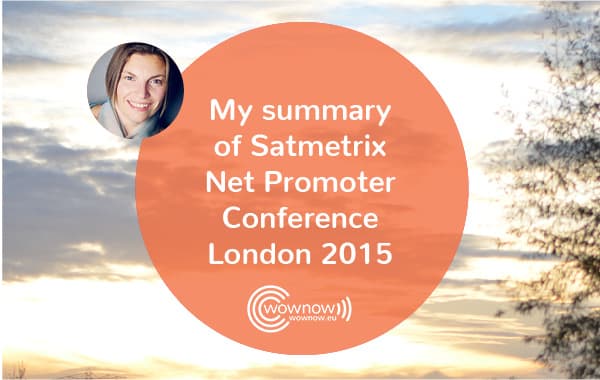

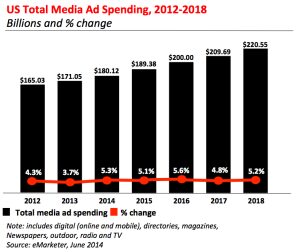


 A (little Italian) sunshine of energy, enthusiasm, and passion, with a mission to bring more happiness in the world one interaction at the time, the business world being my chosen playground!
I inspire and empower conscious leaders to nurture their happiness (moving from depleting to enriching emotions) and to move from depleting to enriching experiences, choosing, designing, and delivering WOW life-enriching interactions that contribute to everyone’s HAPPINESS, so they can achieve business and personal prosperity, making happiness their competitive advantage
A (little Italian) sunshine of energy, enthusiasm, and passion, with a mission to bring more happiness in the world one interaction at the time, the business world being my chosen playground!
I inspire and empower conscious leaders to nurture their happiness (moving from depleting to enriching emotions) and to move from depleting to enriching experiences, choosing, designing, and delivering WOW life-enriching interactions that contribute to everyone’s HAPPINESS, so they can achieve business and personal prosperity, making happiness their competitive advantage 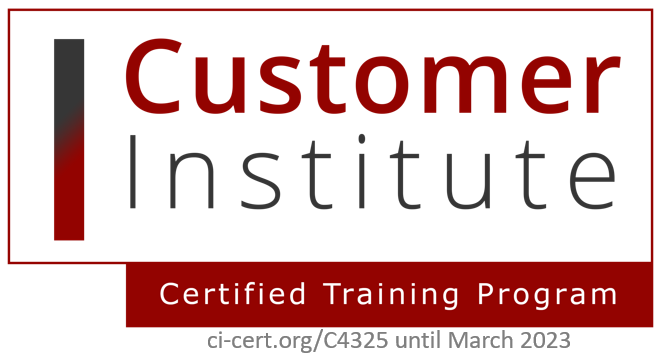

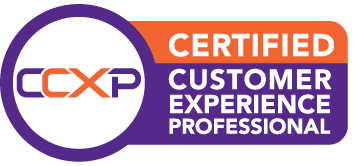
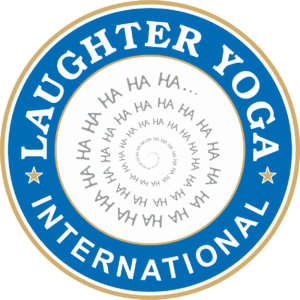




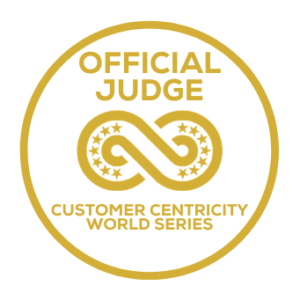
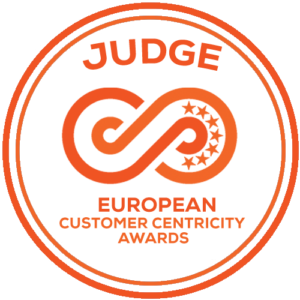
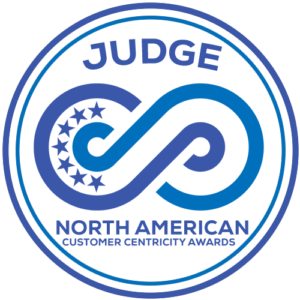
Trackbacks/Pingbacks